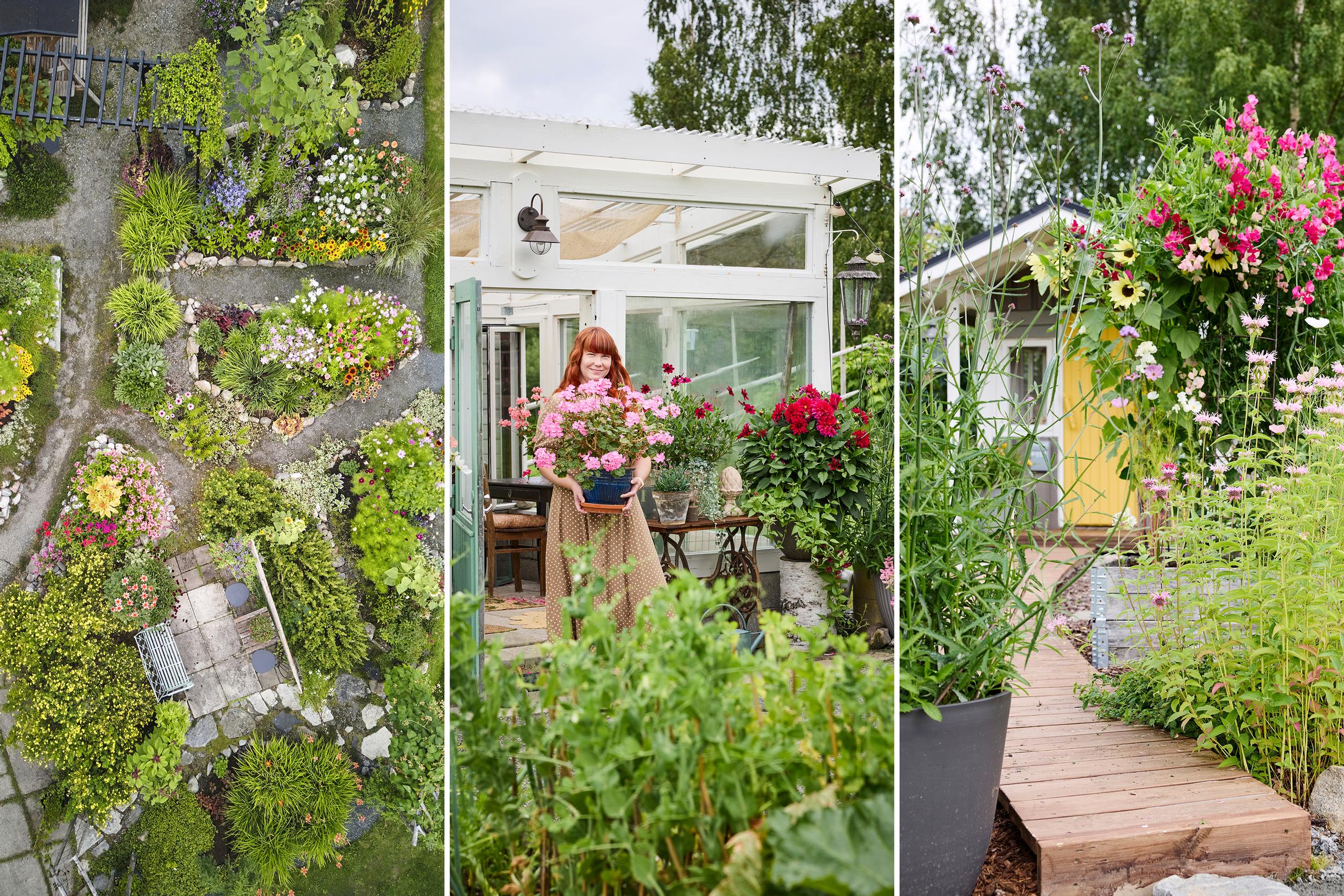
“I wanted something beautiful in the yard without spending much,” says Laura—here’s how to grow a stunning mass of flowers on a small budget
Laura’s flower garden is brimming with summer blooms she has grown from seed. “I grow about a thousand seedlings each year. It would be ridiculous to buy that many from a store,” she says. Check out also Laura’s tips for an idyllic flower garden!
Warm weather pampers the flower beds of Finnish Laura Hartikainen. Butterflies flutter about, and bumblebees buzz through the sea of blooms, moving from flower to flower.
The single-family home in Nilsiä, Eastern Finland, has a front yard filled with annuals, most of which Laura has grown from seed. The flower bed is about the size of a small urban yard, showcasing zinnias, cosmos, and summer coneflowers.
About ten years ago, Laura and her husband Reino Hartikainen moved to Reino’s former childhood home. At first, they were busy caring for their three small children, then Laura turned her attention to the yard. Now, her flower hobby—including seedling cultivation—stays on her mind almost all year.
“I wanted something beautiful in the yard but on a budget, so I experimented with sowing seeds. When I succeeded, it inspired me to continue, and the flower beds began to expand,” Laura says.
These days, Laura is almost completely self-sufficient in seeds, which she collects from fading blooms in late summer.
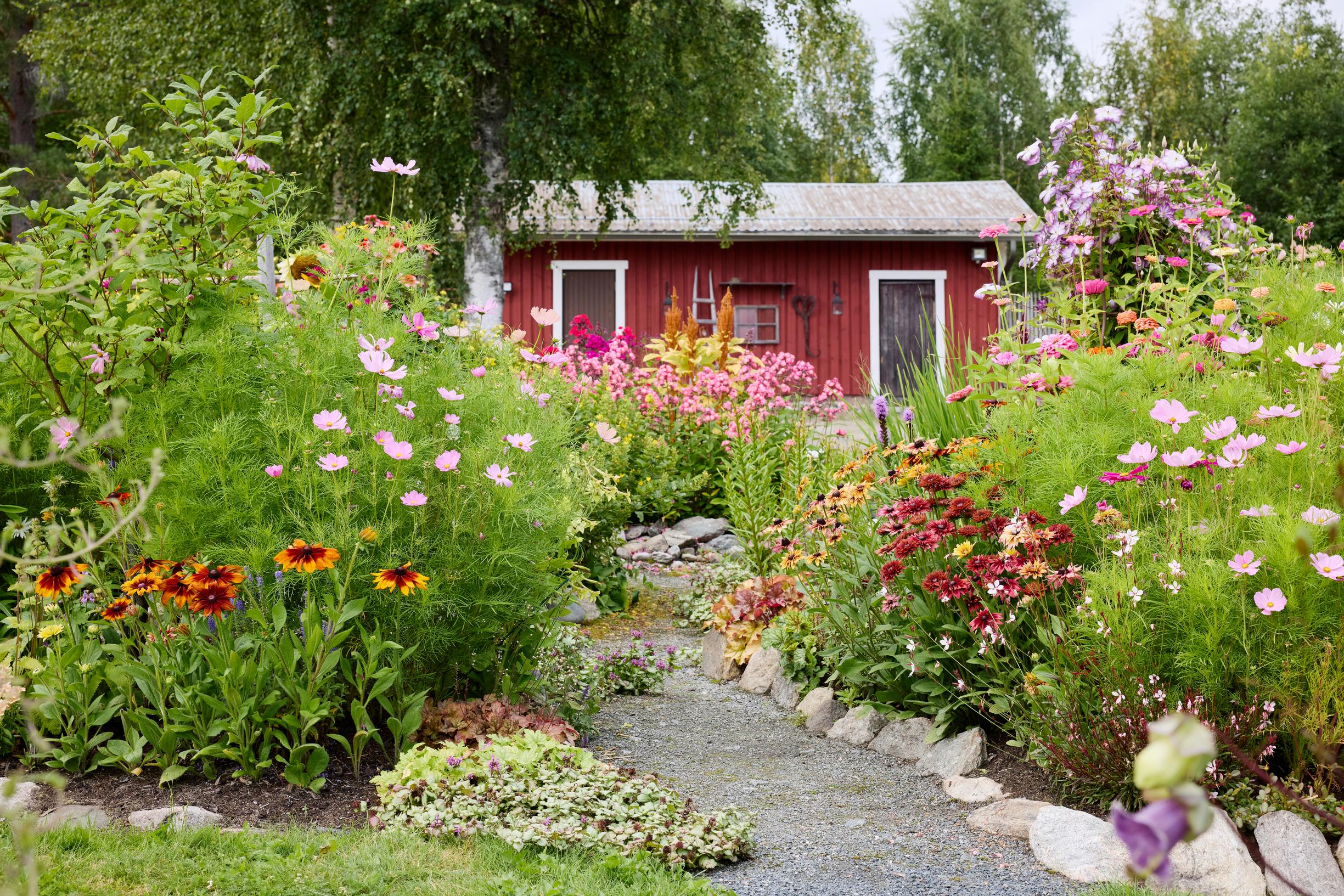
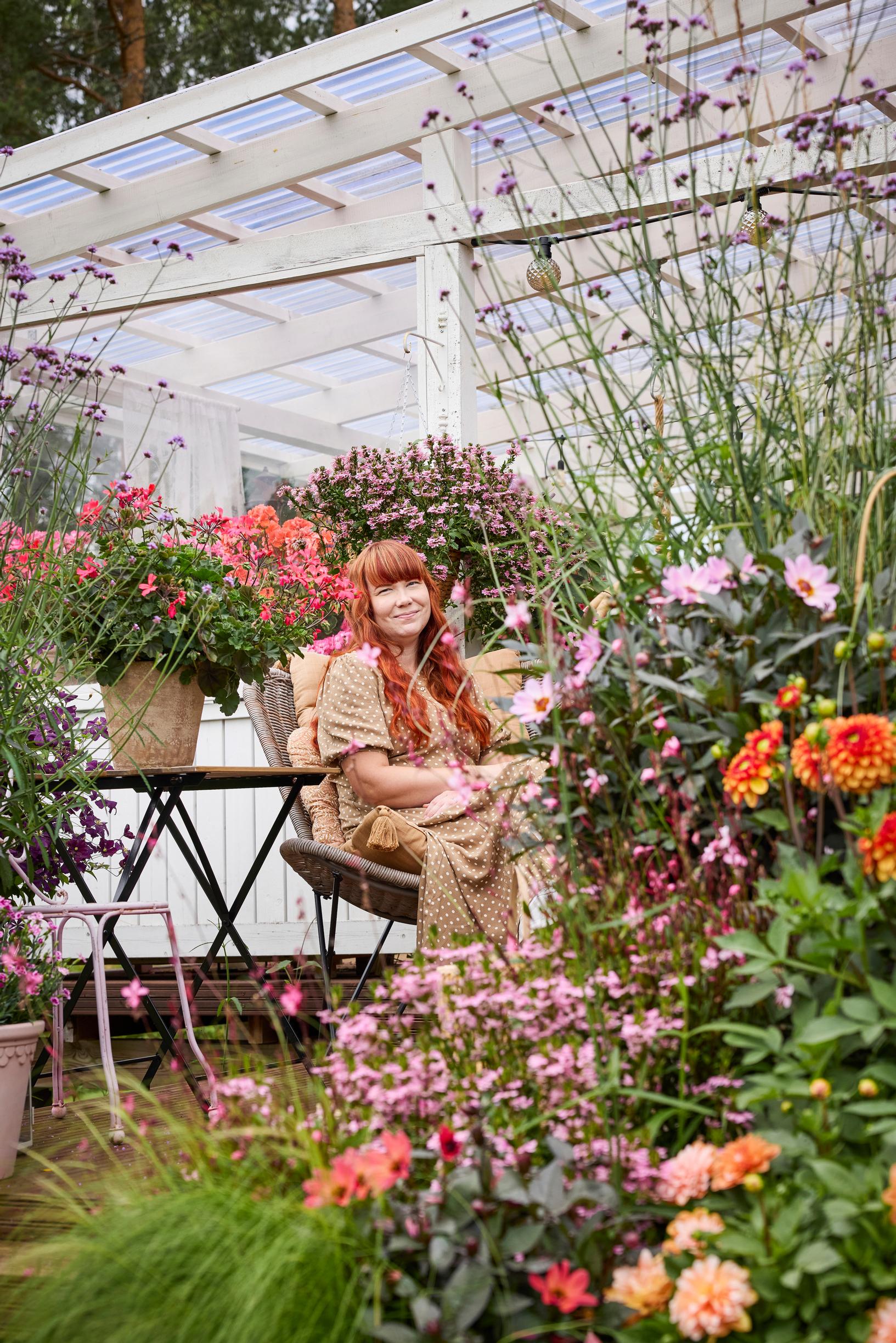
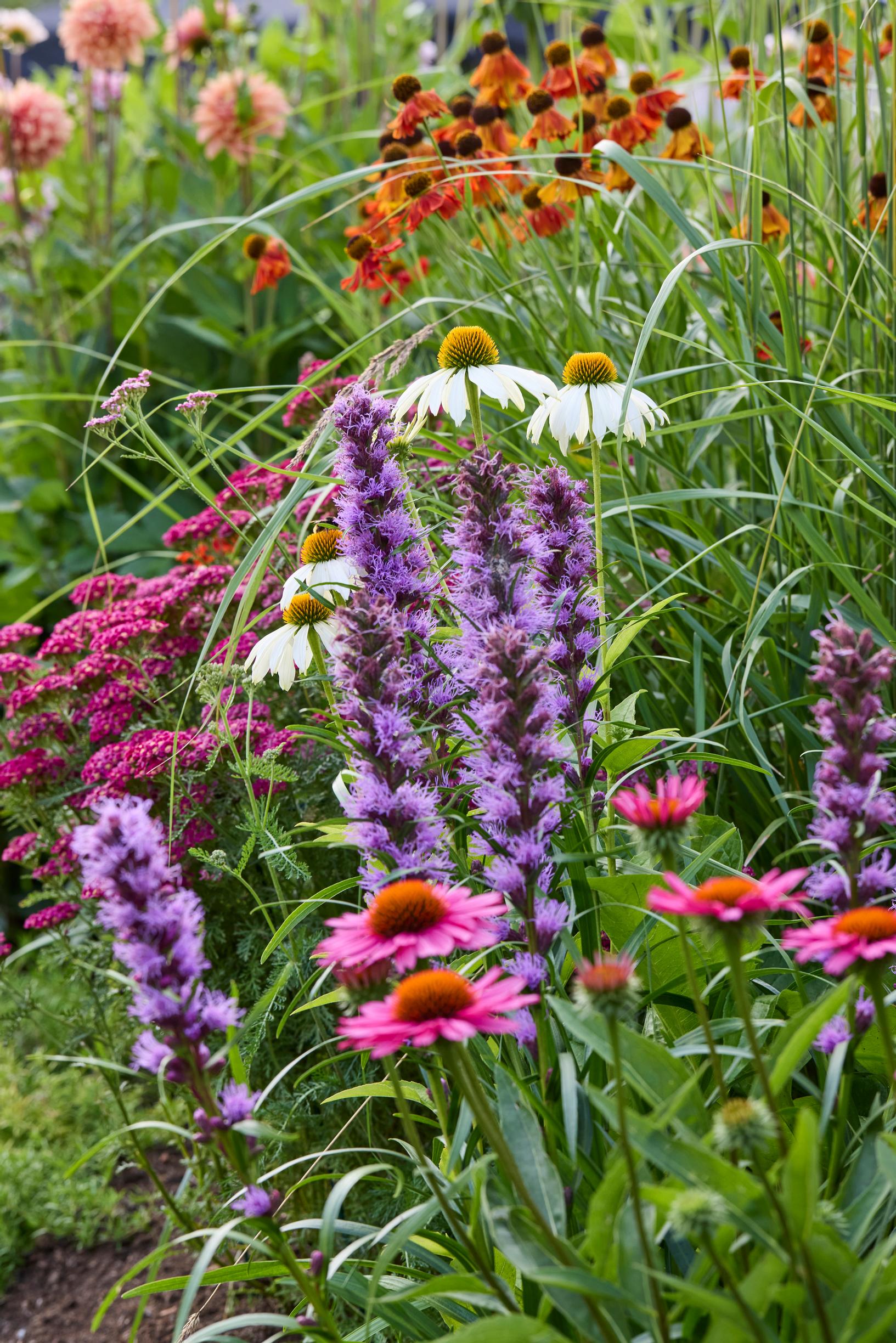
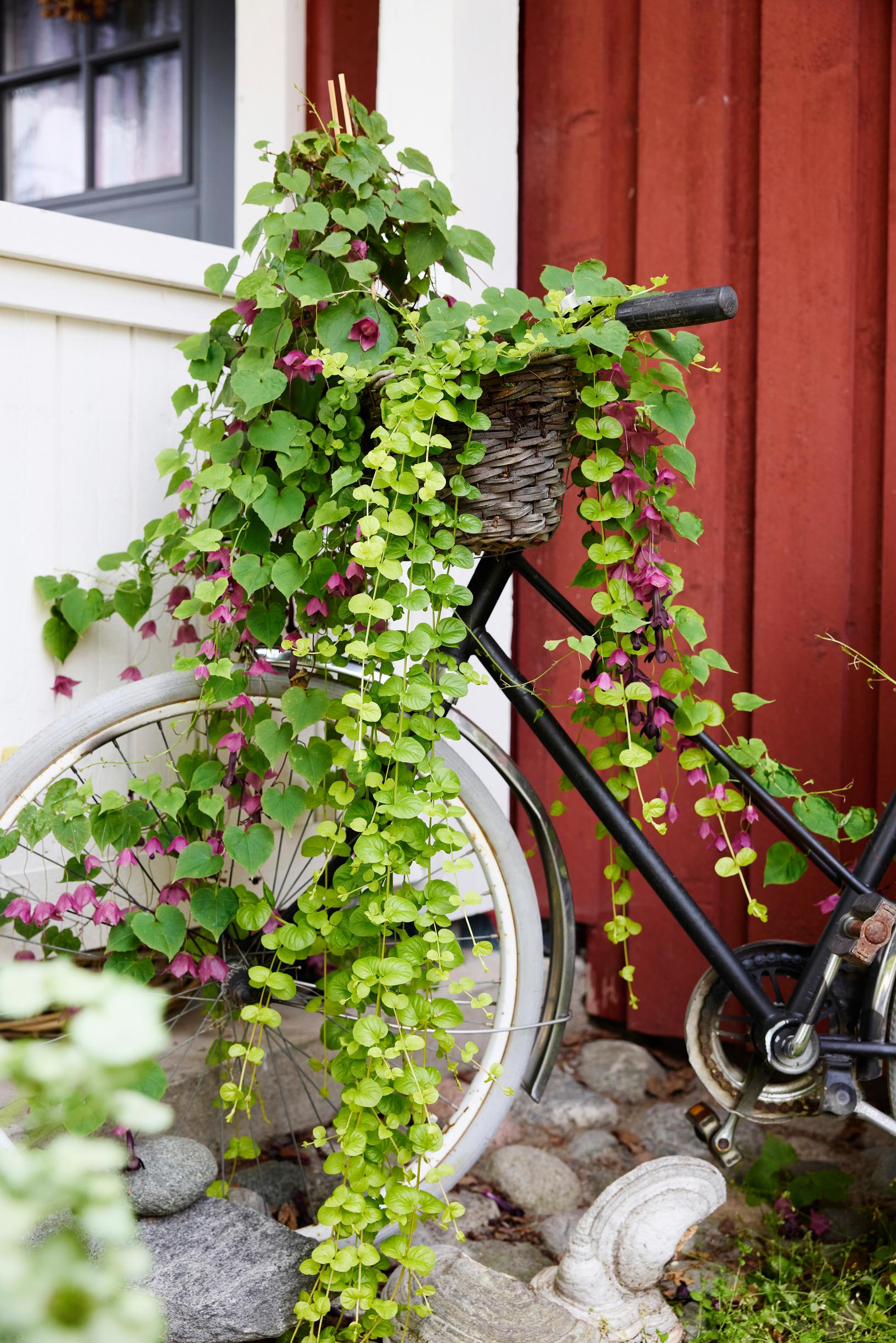
Winds often sweep through the yard of the 1980s home at the edge of a field. The soil is typical of Eastern Finland—rocky and clayey farmland. A thick layer of topsoil ensures the plants thrive.
“My flower hobby got a real boost five years ago when we had the water pipes renovated, forcing us to dig up the entire yard. Since the excavator was here anyway, I asked the operator to carve out new flower beds.”
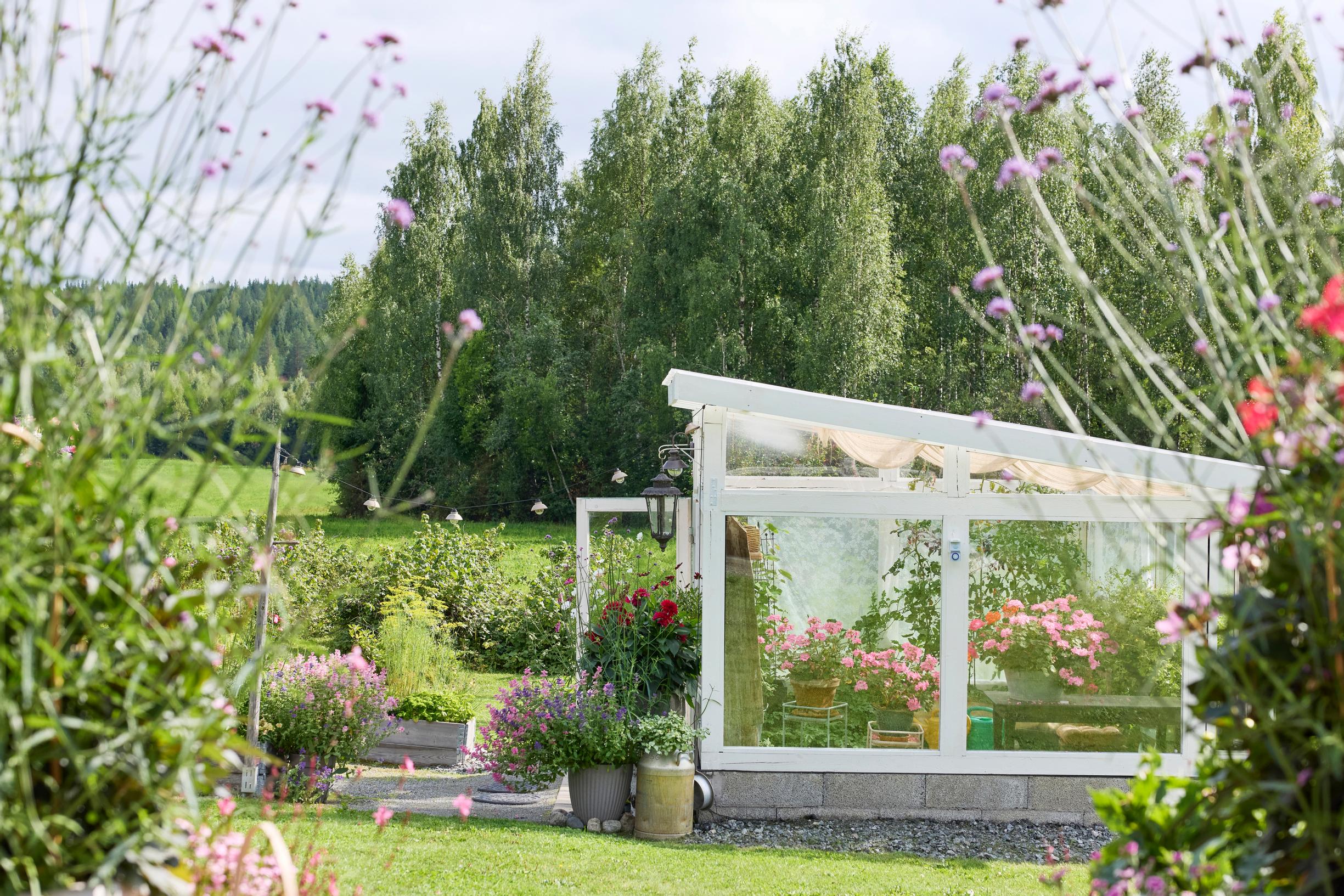
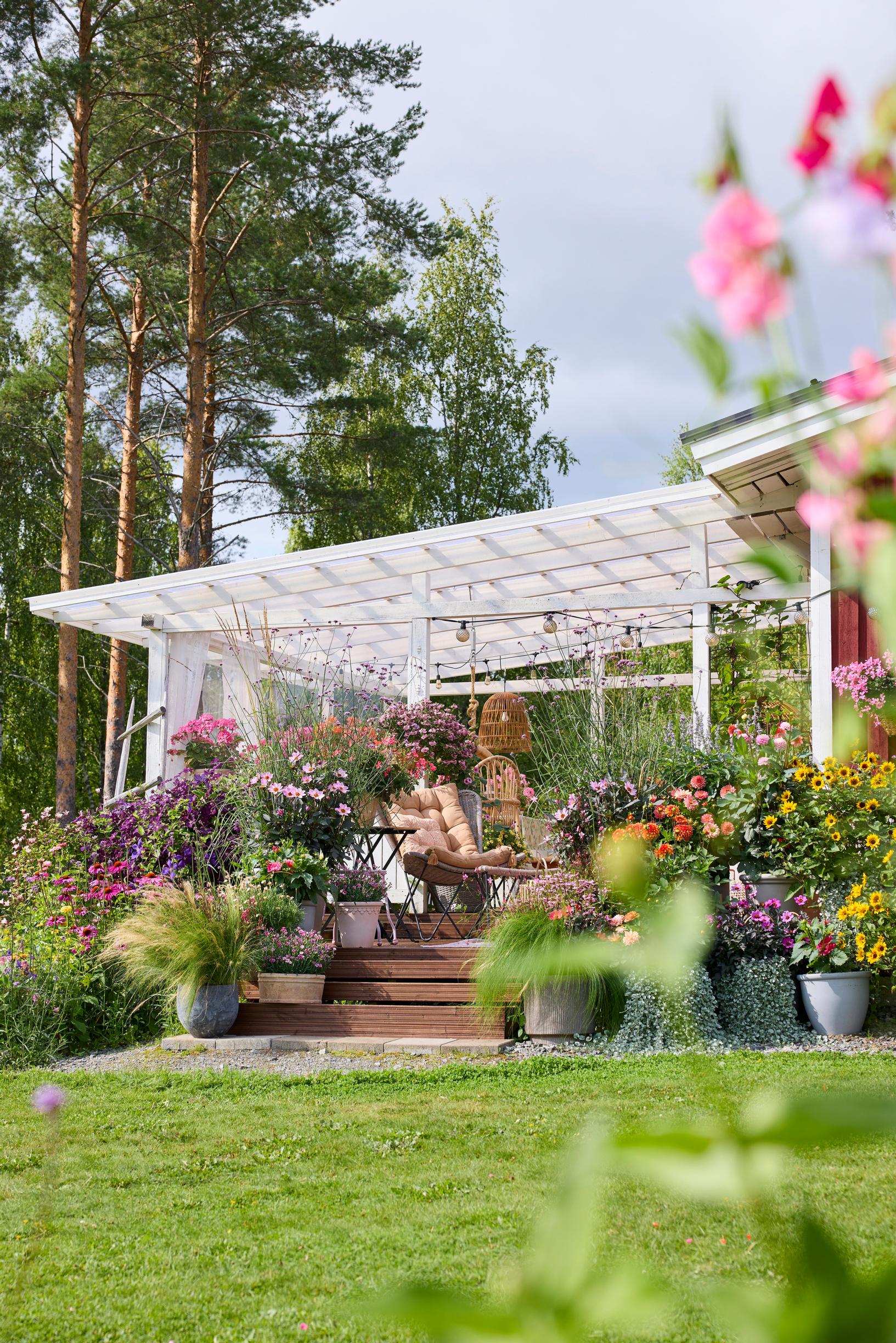
What: Laura’s flower garden in Nilsiä, Finland
Size: The property is 10,000 m², with 500 m² of flower beds
Soil: Clay farmland
Special feature: Mostly annual varieties grown by the owner
The flower beds have expanded into a park-like yard, where you can stroll among the blooms along winding paths. Archways covered with clematis, runner beans, and sweet peas frame the views.
Laura sketches out her beds carefully before starting seedlings. In late winter, she sows bell vine, then cup-and-saucer vine. April is prime sowing time for zinnias, cosmos, sunflowers, and most other summer flowers.
“Plant height is important to me, more so than color. All hues are lovely and work together, though I admit pink and orange blooms are on the upswing here. Every year, I try something new.”
In the beginning, Laura raised her seedlings on windowsills. Now, shelves and grow lights make the job easier. As soon as the weather allows, she brings the seedlings to the greenhouse to harden off. Even sweet peas become sturdier in cool conditions.
“I grow about a thousand seedlings each year. It would be ridiculous to buy that many at a store. My cup-and-saucer vine seeds germinate better than store-bought ones, and each new generation still looks much like the original.”
“I grow about a thousand seedlings each year. Buying that many would be ridiculous.”
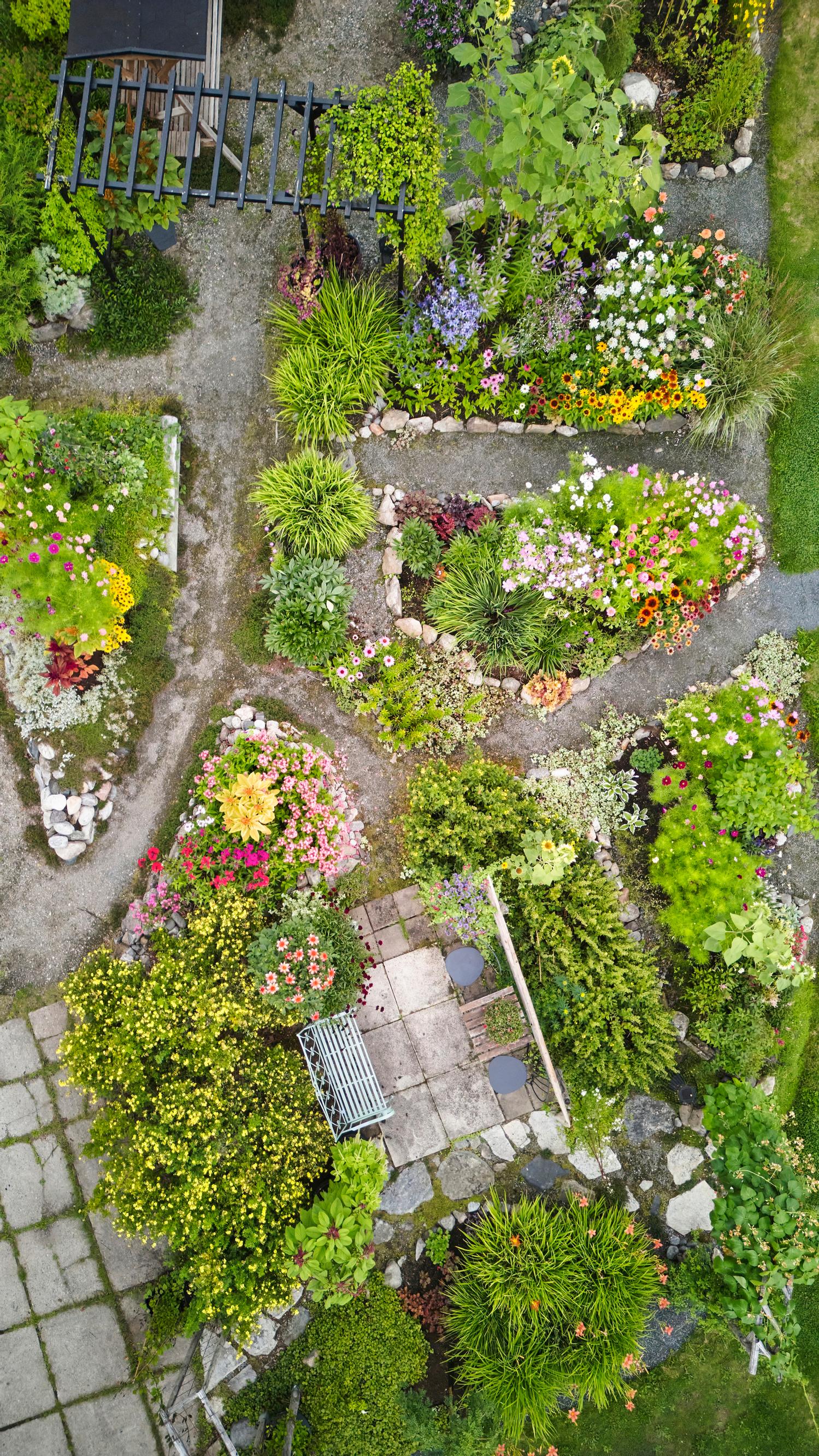
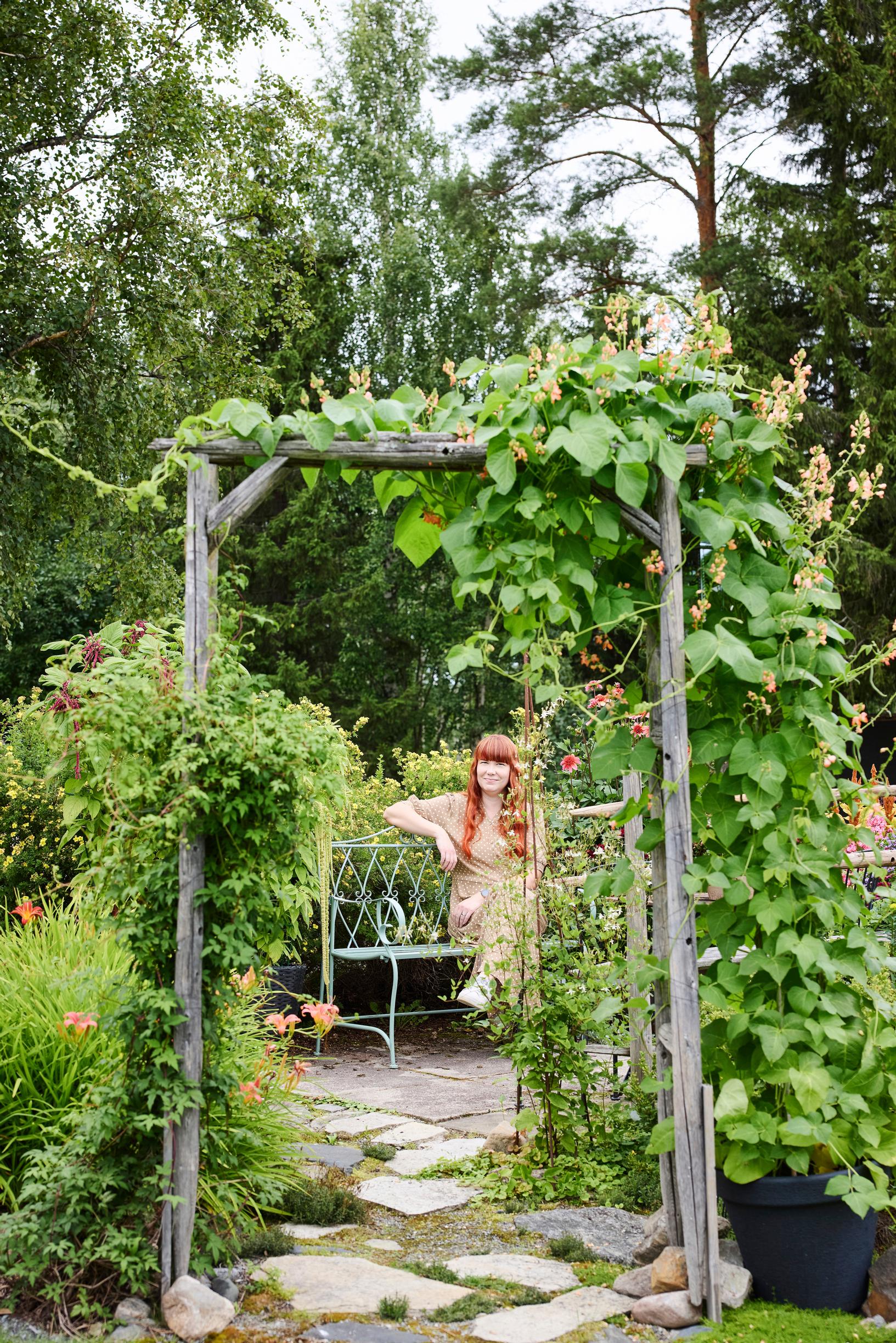
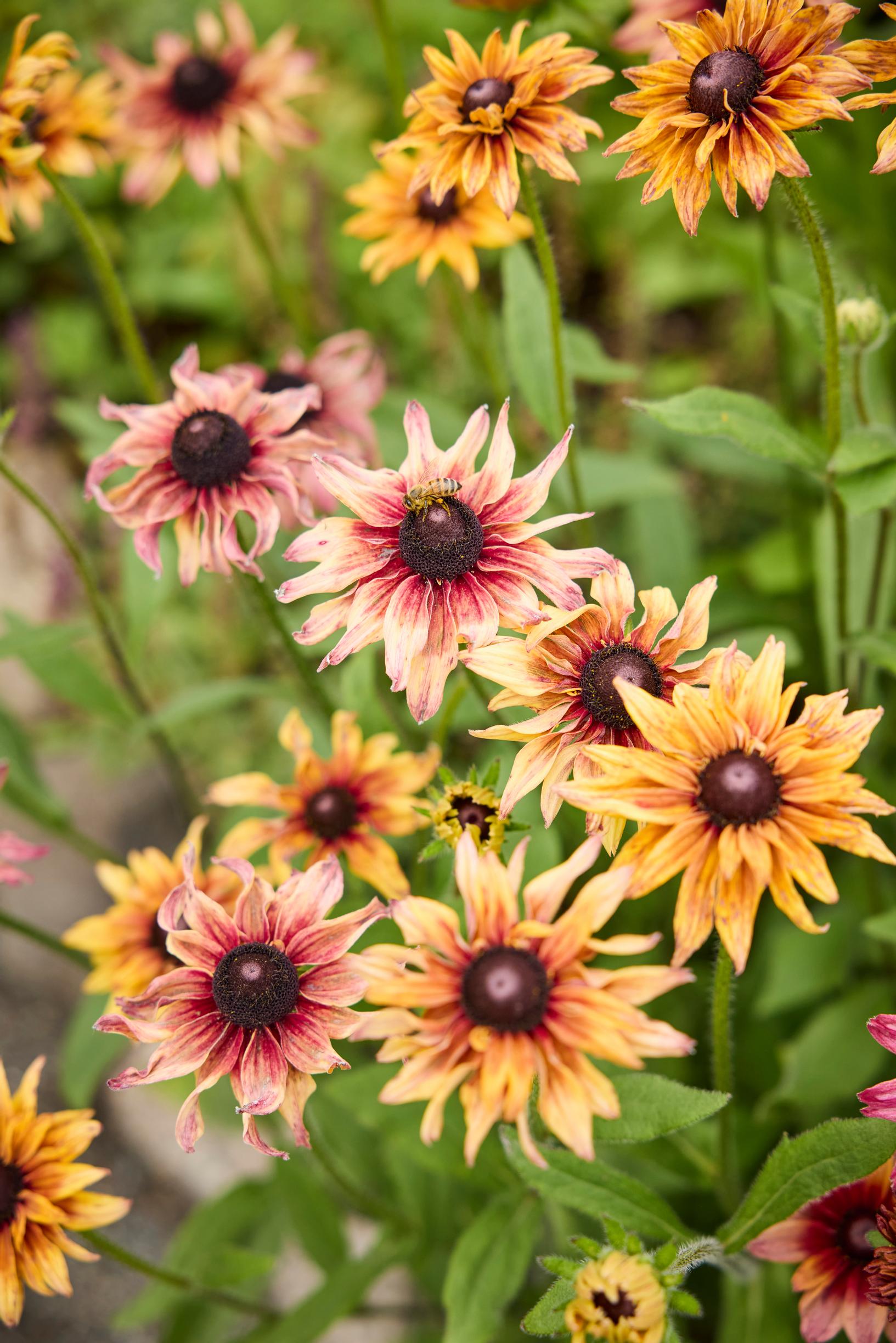
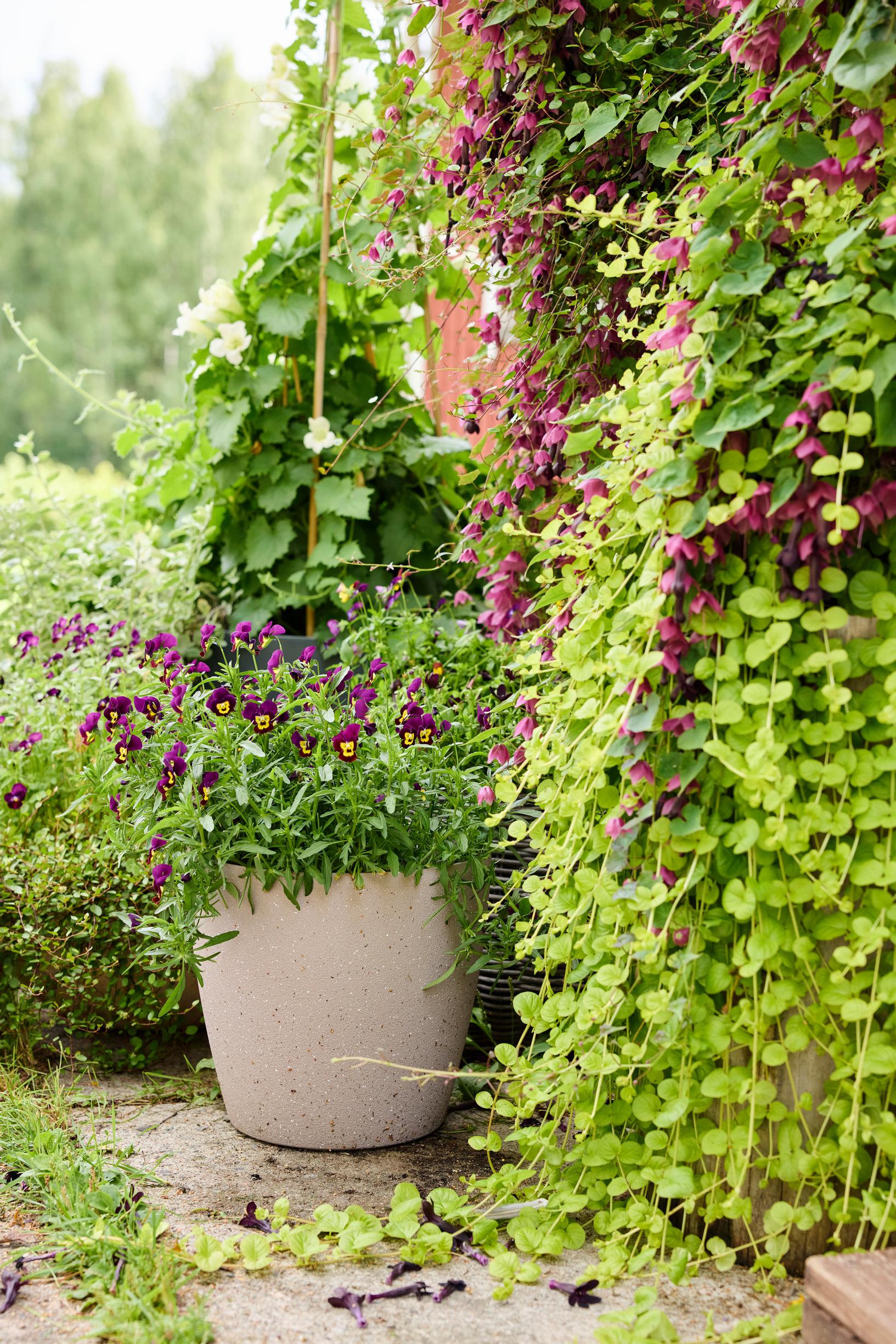
Sometimes nature helps the gardener. Tall verbena by the house lures in pollinators, and Laura transplants the self-sown seedlings to her beds.
“I tried sowing tall verbena from store-bought seeds, but it failed even though I followed all the cold-treatment steps. The self-sown ones did better and bloomed in time.”
Laura no longer digs new beds. Instead, she layers branches, plant debris, and soil right on top of the lawn. After the ground thaws, she fertilizes with chicken manure, compost, and fresh soil, which typically lasts all summer. Only clematis need more fertilizer to keep growing and blooming. Sometimes she also adds fertilizer to the water for her summer flowers.
Laura leaves all her plant debris in place in autumn. Winter does most of the decomposing, leaving little cleanup in spring. The seeds remain, and new seedlings often surprise her.
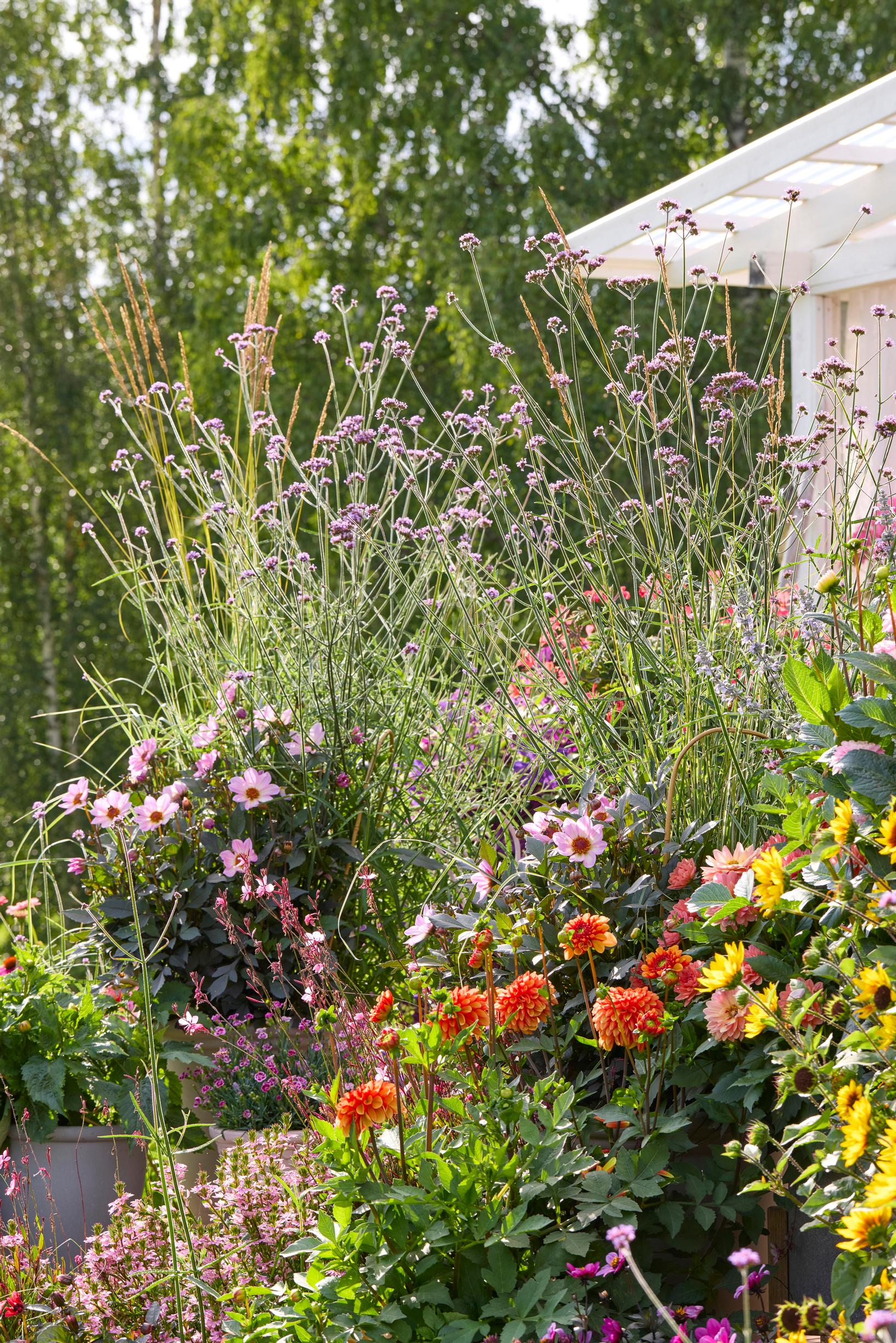
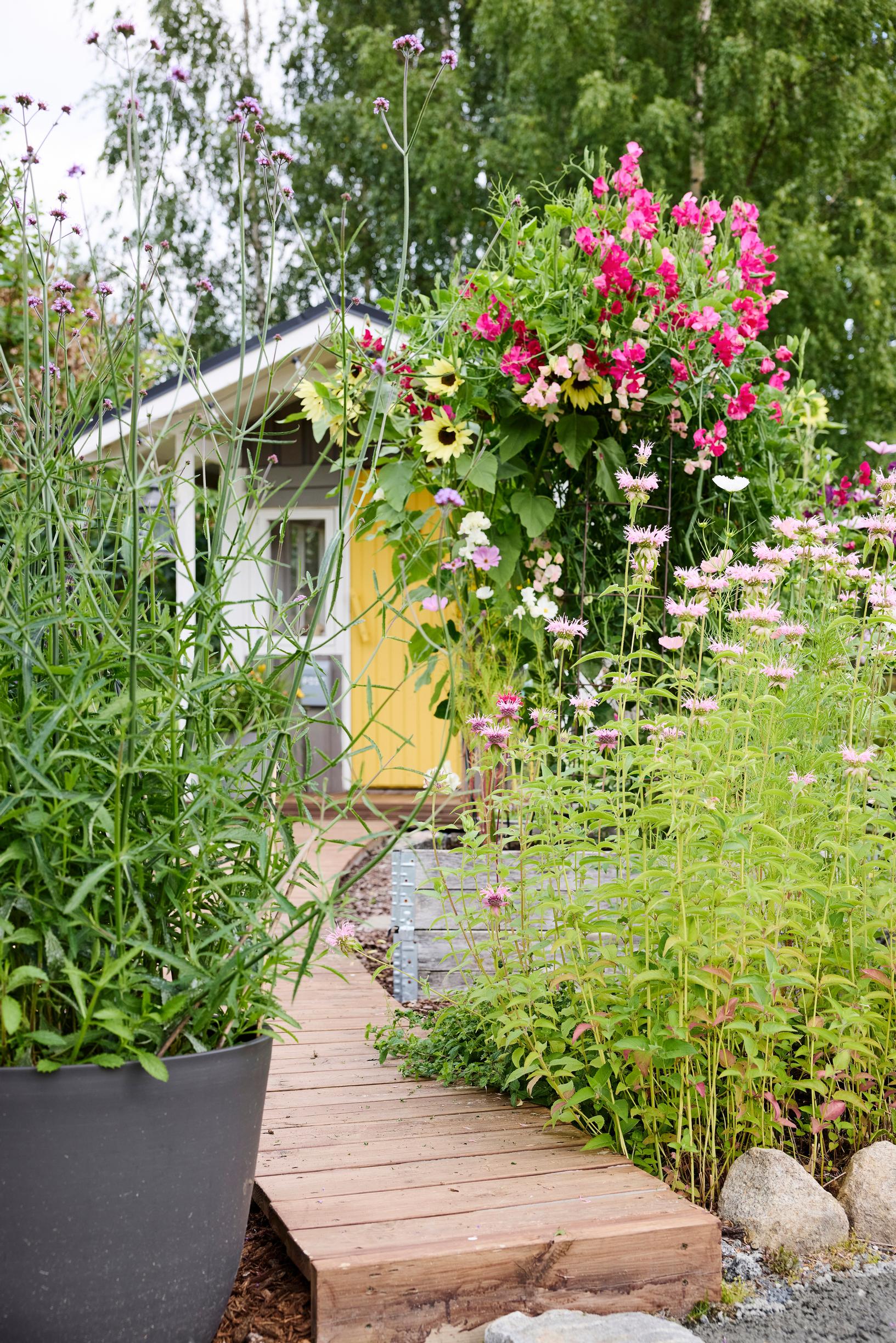
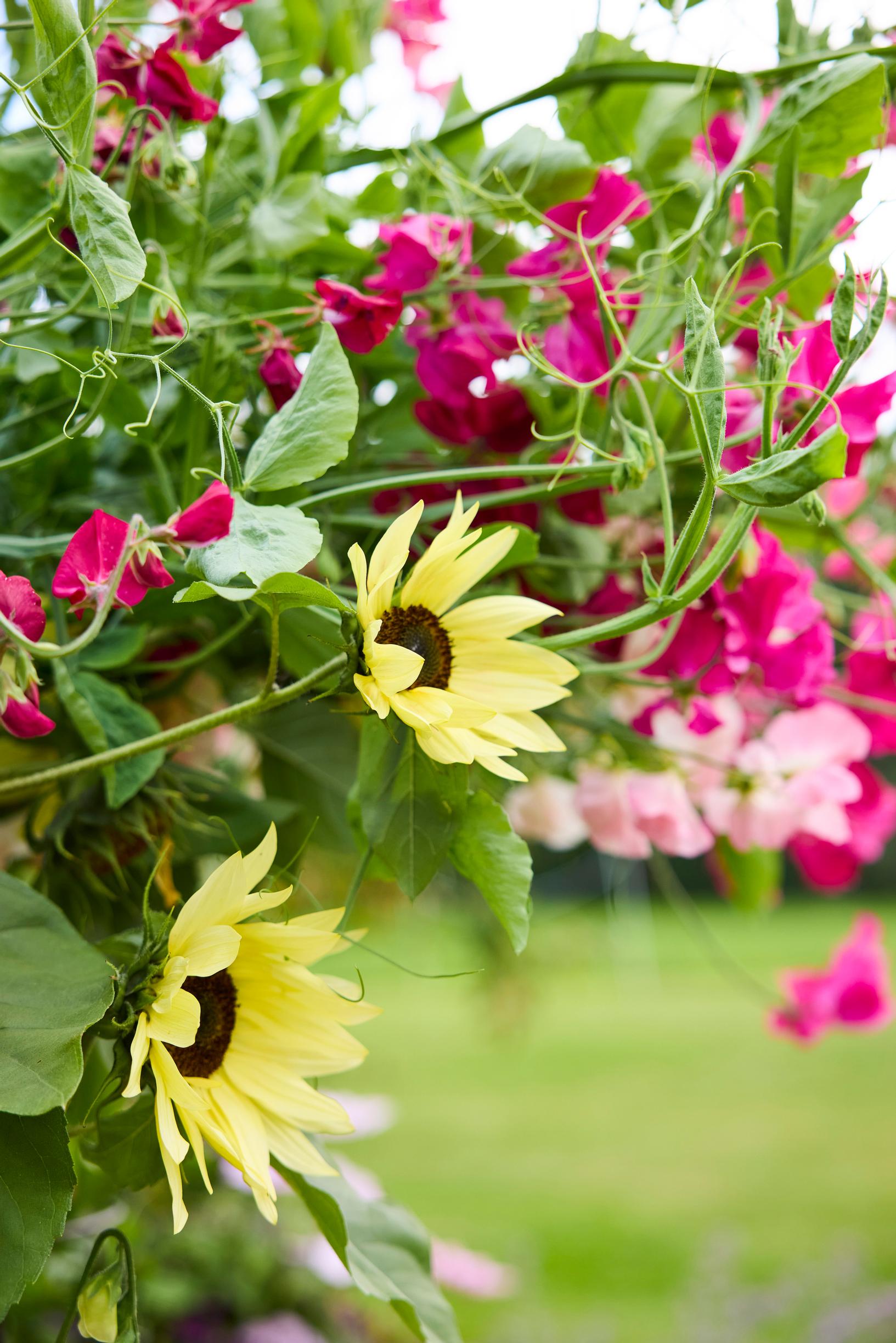
Though there are plenty of seating spots in the yard, Laura rarely uses them herself, since she’s usually busy tending her plants. She might sit for a moment when visitors come by.
“When I’m alone, I can’t just sit—there’s always something to do, like weeding or removing dead leaves. At my busiest, I wonder if I should raise fewer seedlings next year, but that doubt quickly fades. Flowers give me so much joy.”
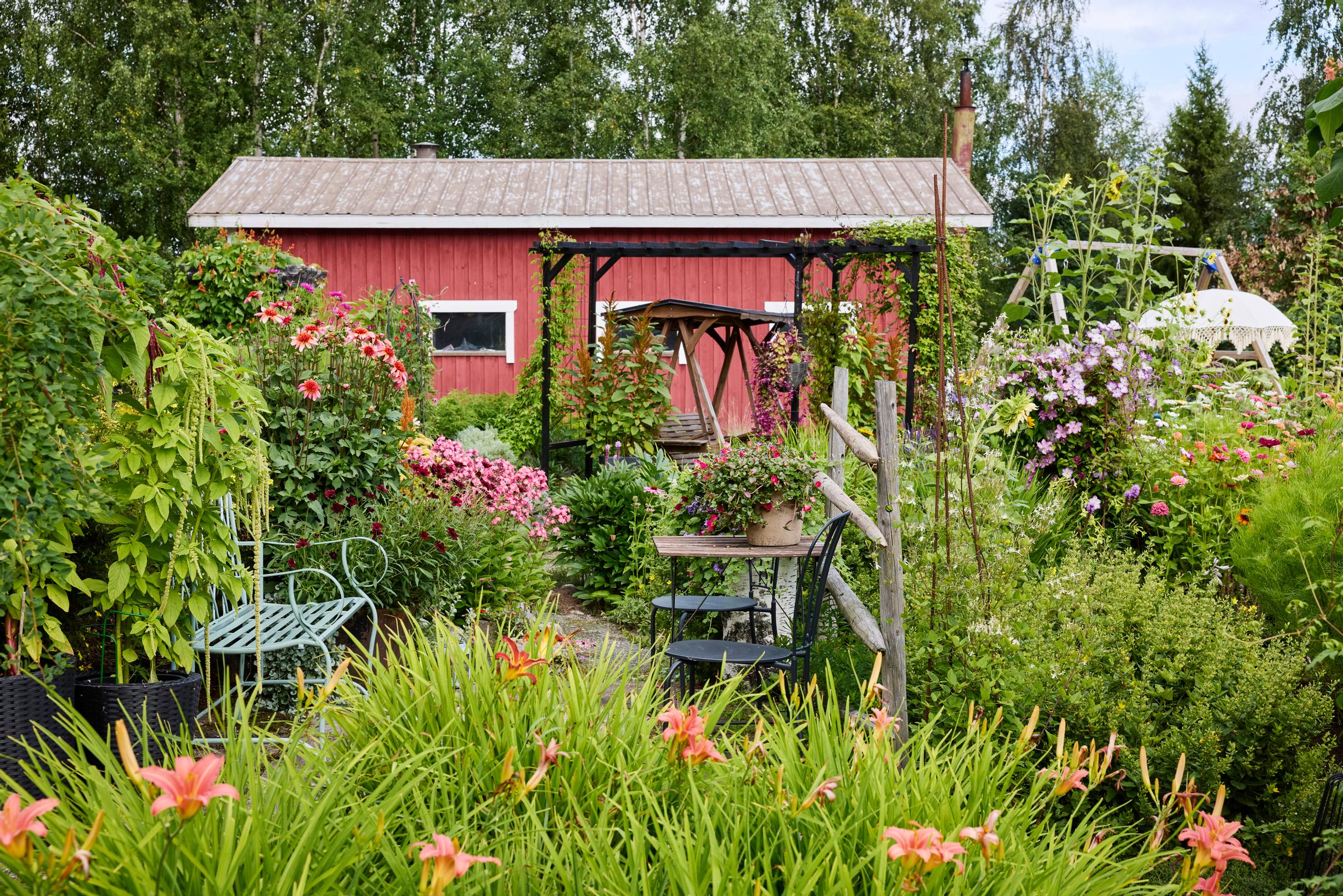
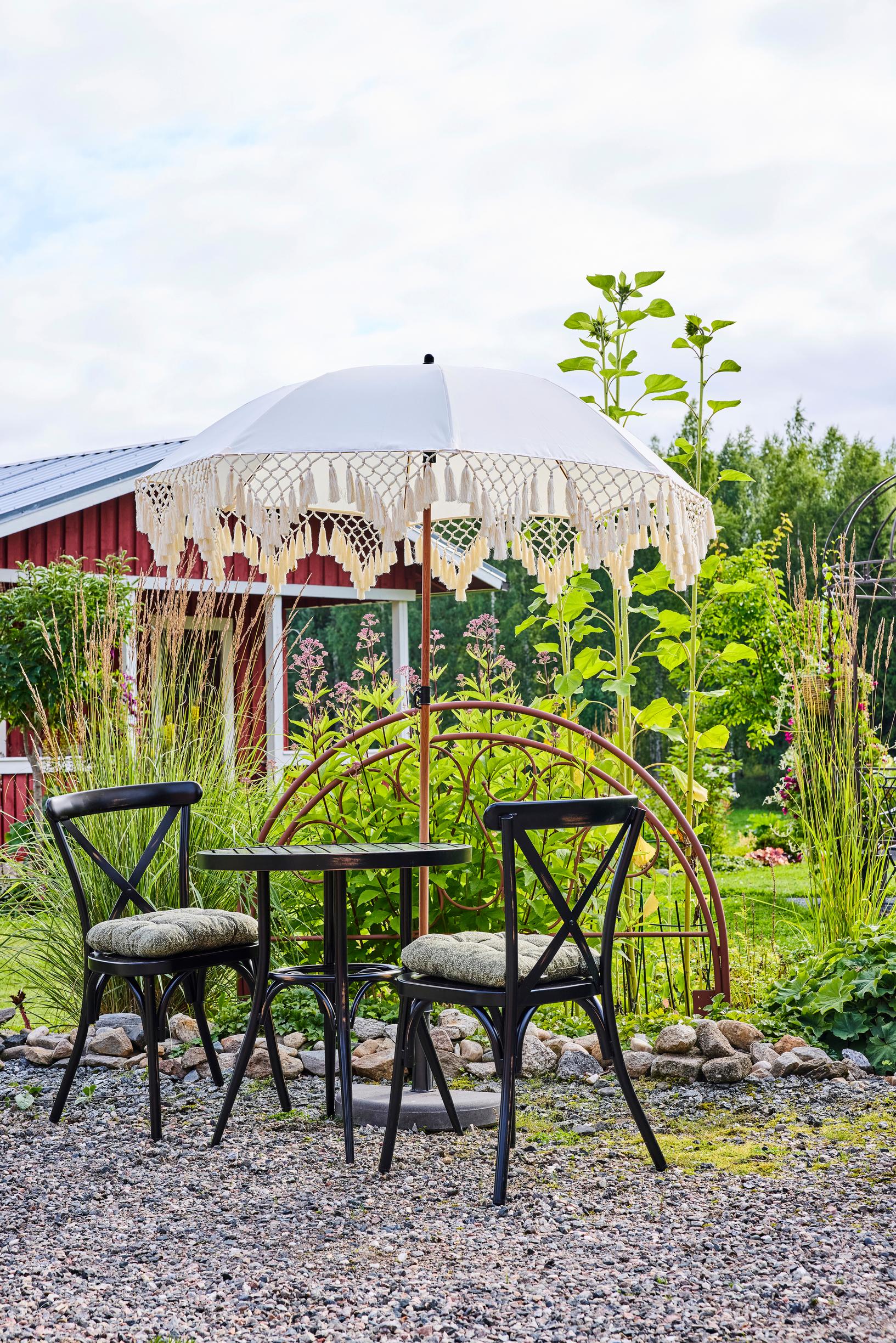
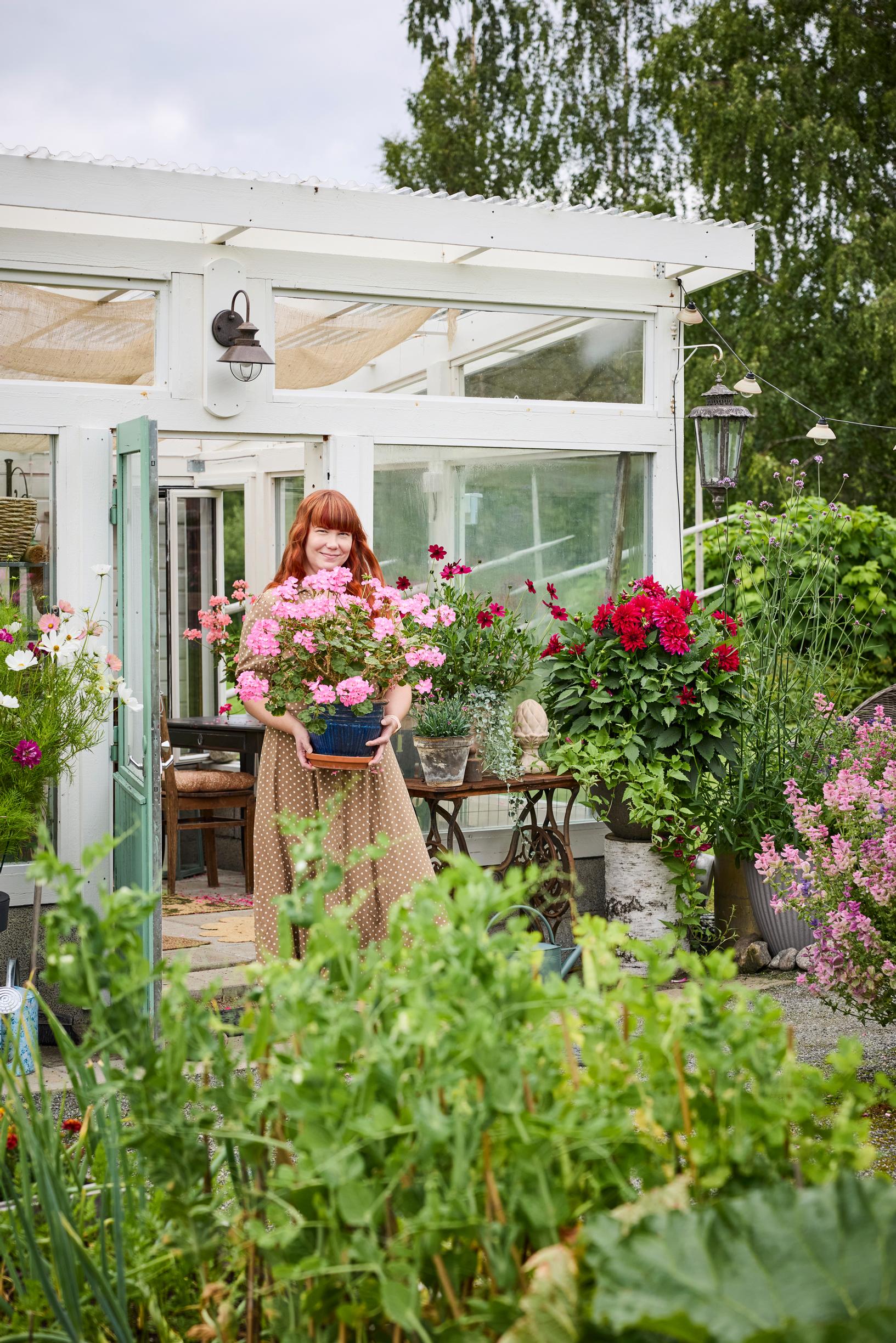
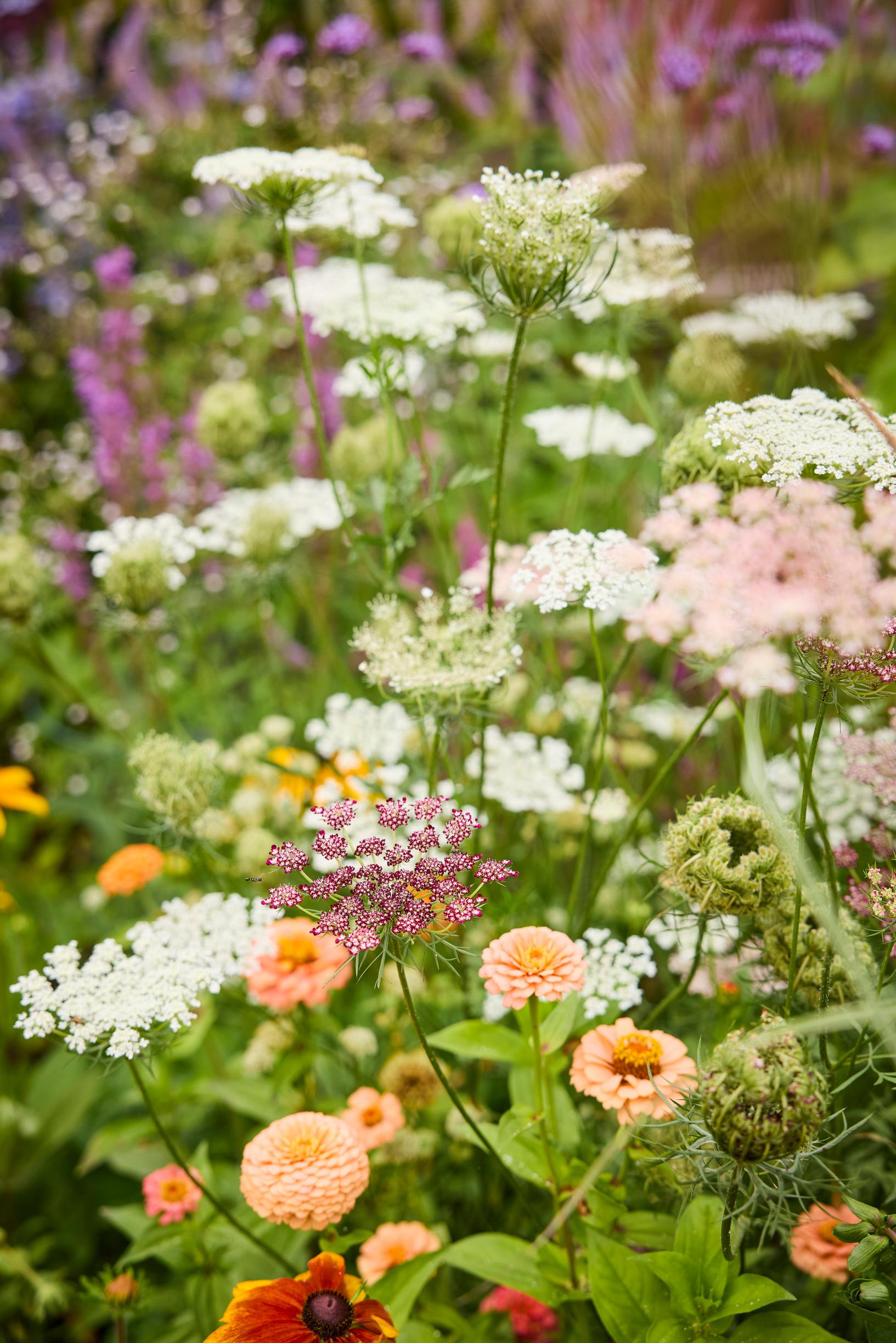
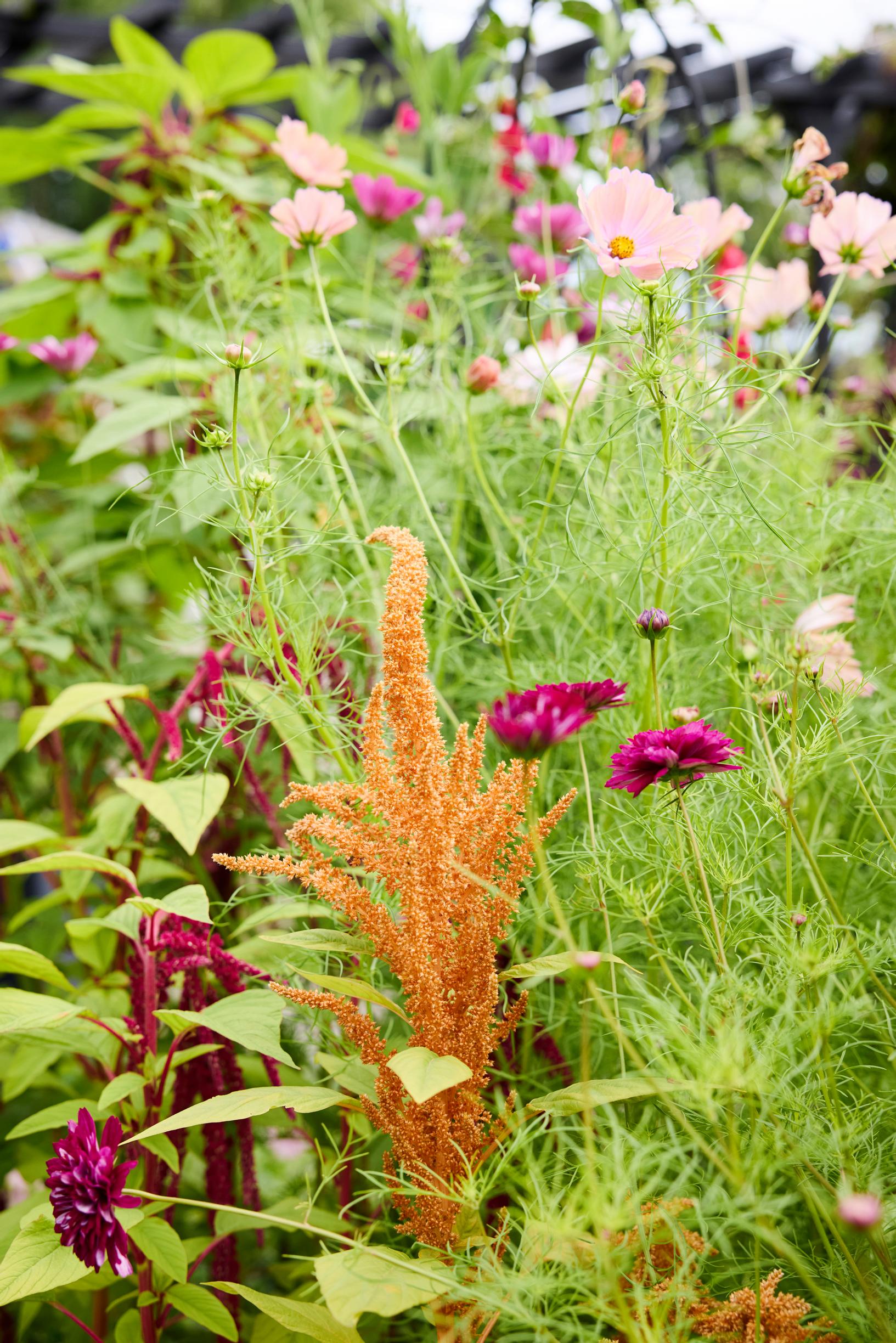
Laura’s tips for an idyllic flower garden
1. Play with colors
Boldly combine different species and varieties. The end result looks natural and brings in all kinds of pollinators.
2. Plant densely
When foliage covers the soil, plants help support each other, and weed seeds have no room to sprout.
3. Collect seeds
Grow your summer flowers from seeds you collect to save money. Make sure they’re fully ripened.
4. Frame the views
Design vistas in your garden that are framed by plants and arches. Having perennial clematis and annual runner beans share the same support works beautifully.
5. Make use of stones
For paths and flower bed borders, use natural or repurposed stones from your property. Combine stones of different sizes and shapes for a style that’s uniquely yours.


